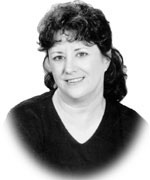 By Laine Welch January 16, 2006
Quinn Weninger, an economist
at Iowa State University, is leading a study called "Halibut fishing is a great example of a process in which decisions have to be made about where fish might be, and the decisions are all subject to various forms of uncertainty. It is a very interesting, natural experiment for us to try and test some of the theories that are being put forth about decision making under uncertainty. That's the motivation for this study," Weninger said. Researchers suggest that people tend to use simplifications or "rules of thumb" - called heuristics - to aid in the complex task of making decisions under uncertainty. "These rules of thumb can lead to errors or mistakes, and there is tremendous interest in the academic community to try and uncover how these various heuristics influence decisions," Weninger said. For the two year halibut project, each skipper will be given a hand held computer and GPS logger, and asked to "point and click" through a short list of questions before they leave for a fishing trip. "They'll be asked about the thought processes that went into making the decision about where they are going to fish, and in particular, what they expect to catch. At the end of the trip, they'll do another round of questions, such as what might have changed out on the water, and how they reacted as the trip proceeded," Weninger said. He stressed that all fishing data will remain strictly confidential. Weninger added that getting "real" results from the fishing grounds will be more meaningful than from controlled experiments. "Because we will be gathering data from real decision makers where risks are important and the stakes really matter, we think we'll have something to say that is new and exciting," Weninger said. Results of the two year study, which is funded by the National Science Foundation, will help researchers learn how expectations are formed, how choices are made, and how the level of risk affects the decision-making process. The work can benefit others who work in high-stress occupations, and those who provide support services, Weninger said. Get more information at weninger@iastate.edu , by calling 206-437-7374, or visit http://cssm.iastate.edu/srs/halibut/. POLLOCK GOES TO SCHOOL - The Genuine Alaska Pollock Producers is taking the lead to get more fish into the mouths of America's school kids. The GAPP is an association formed in 2003 that represents every at-sea and shore based processor in the Alaska pollock industry. It promotes Alaska pollock in markets around the world with a focus on Europe, North America and Asia. GAPP members are now in Orlando, Florida for a three day School and Child Nutrition Industry Conference, which brings together food decision makers and seafood suppliers. The GAPP's goal is to convince them to use more pollock products in the nation's school lunch program. According to Intrafish, GAPP will share results of a pilot project done last fall in three school districts in Seattle, Houston and Virginia Beach. It showed that students were very receptive to Alaskan fish tacos, and they would like them to be part of their regular school lunch menus. GAPP president Rick Muir said the group is developing more kid tested menu items, and they believe children would enjoy fish more if better quality products were available in American schools. POLLOCK PAY OUT - Speaking of Alaskan pollock: many will be surprised to learn that pollock is the source of the largest privately funded, marine research program for state universities in Alaska's history. Since 2000, member boats of the At-sea Processors Association have donated a total of $1 million each year to the Pollock Conservation Cooperative Research Center (PCCRC), headquartered at the University of Alaska/Fairbanks. "The PCCRC is one of our real delights," said Denis Weisenberg, dean of UAF's School of Fisheries and Ocean Sciences. "Part of their contribution goes to an endowed chair, part to a research endowment, and part of it funds directed research. It is a wonderful arrangement and helps us offset state dollars that don't seem to be coming as quickly as we need them," he added. The PCCRC research projects are primarily designed to improve knowledge about the North Pacific Ocean and Bering Sea. Studies have focused, for example, on predation of Northern fur seals in the Pribilof Islands, jellyfish impacts on food web production, the use of acoustic data loggers on fishing vessels, and the possible relationship between killer whales and disappearing sea lions. The PCCRC is a sponsor of the Marine Science Symposium, Jan. 22-25 in Anchorage. SYMPHONY OF SEAFOOD ATTRACTS NEW FISH - The popular Alaska Symphony of Seafood kicks off on January 19 at the Hyatt Regency Lake Las Vegas Resort. Now in its13th year, the 2006 event has attracted 19 new Alaska seafood products from large and small companies. The entries compete in three categories - retail, foodservice and smoked - and are judged by a panel that represents diverse segments related to the seafood industry. Of note this year is a new fish entry into the field long dominated by salmon. Prowler Fisheries of Petersburg and Seattle restaurateur Tom Douglas have partnered to offer five specially flavored sablefish tenderloin dishes. Except for the Las Vegas People's Choice Award, all winners will be kept secret and announced at a second Symphony event on February 4 at the Fourth Avenue Theater in Anchorage. All top winners receive a trip to the International Boston Seafood Show in March. Get more information or tickets at www.symphonyofseafood.com. Publish A Letter on SitNews Read Letters/Opinions Submit A Letter to the Editor
|
||
